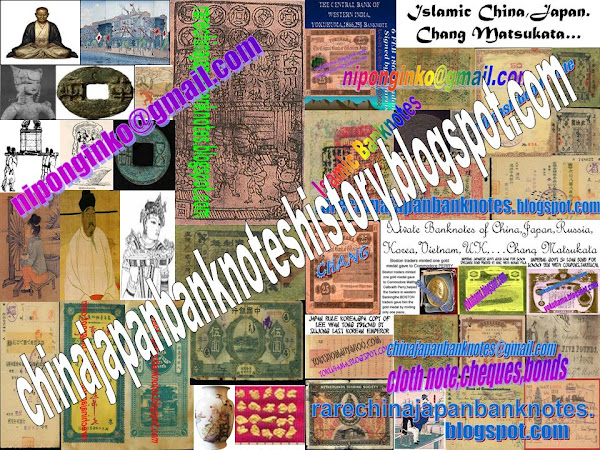
Yuan Hengli Money Shop, 3 diao
3 strings (diao) payable in value 10 struck copper coins
This is an unissued exchange note of 元亨利 Yuan Hengli Money Shop.
Top inscription: 歷邑東北鄉李官莊 @ me at niponginko@gmail.com
Printed obviously in the early years of the Republic.
Denomination is given as 3 strings payable in "value 10" struck copper coins at the rate "98". The Inscription in green color given at the bottom of the note says
"Altogether 147 pc. "value 10" coins" (計銅元壹百四十七枚) what exactly fits to the method of the calculation of the cash coins used inManchuria (東錢). Other denominations (1 diao and 5 diao) are also known for this money shop, I only saw unissued ones.This bank opened one or more branches in India China had to the outside world was through India U.S. troops and equipment came to China through India , and Chinese troops were trained by Americans in India India
Printed obviously in the early years of the Republic.
Denomination is given as 3 strings payable in "value 10" struck copper coins at the rate "98". The Inscription in green color given at the bottom of the note says
"Altogether 147 pc. "value 10" coins" (計銅元壹百四十七枚) what exactly fits to the method of the calculation of the cash coins used in



















